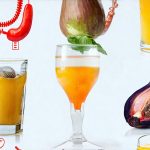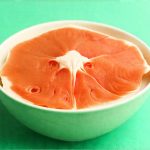A healthy bladder is often taken for granted until something goes wrong. Many people experience issues ranging from frequent urination and urgency to more serious conditions like interstitial cystitis (IC) or overactive bladder (OAB). While treatment plans typically involve medication and lifestyle adjustments, a growing body of evidence suggests that diet plays a significant role in bladder health. The lining of the bladder – called the urothelium – is sensitive and can be irritated by certain foods and beverages. Supporting this delicate lining through careful dietary choices isn’t about restrictive elimination diets for everyone, but rather focusing on nourishing options that minimize irritation and promote healing. This article will explore how daily meal choices can contribute to a healthier bladder and potentially alleviate symptoms associated with bladder sensitivities.
Understanding the connection between what we eat and how our bladders function is crucial. The urothelium acts as a barrier protecting underlying tissues from urine, which contains waste products. When this lining is compromised or inflamed, it becomes more permeable, allowing irritants to cause discomfort and triggering symptoms like urgency, frequency, and pain. Dietary choices directly impact the inflammatory state of the body and can either exacerbate or soothe bladder irritation. It’s important to remember that individual sensitivities vary greatly, so what triggers one person may not bother another. A mindful approach, focused on identifying personal trigger foods and prioritizing bladder-friendly options, is key to long-term comfort and well-being. If you are looking for ways to support your kidney health along with your bladder, consider exploring natural prebiotic meals that avoid bladder irritants.
Nourishing the Urothelium: Dietary Foundations
The foundation of a bladder-healthy diet isn’t about deprivation; it’s about abundance – focusing on foods that actively support the urothelium and overall health. This starts with an emphasis on anti-inflammatory foods, which help calm irritation and strengthen the bladder lining. Foods rich in antioxidants are particularly beneficial as they combat oxidative stress, a key contributor to inflammation. A cornerstone of this approach is hydration. Adequate water intake dilutes urine, reducing its concentration of irritants, and supports optimal bladder function. Aim for 6-8 glasses of water daily, adjusting based on activity level and climate.
Beyond hydration, incorporating foods containing specific nutrients can be incredibly supportive. Omega-3 fatty acids, found in fatty fish like salmon and flaxseeds, possess powerful anti-inflammatory properties. Similarly, Vitamin C, abundant in citrus fruits (for those who tolerate them – see below), berries, and bell peppers, strengthens the bladder lining and supports immune function. Fiber-rich foods, such as whole grains, legumes, and vegetables, promote gut health, which is increasingly recognized as linked to bladder health through the gut-bladder axis. A healthy gut microbiome reduces inflammation throughout the body, including in the urinary tract. To further support this connection, explore urology-safe foods that also support gut health.
Finally, consider the concept of “food pairing.” Combining certain foods can enhance nutrient absorption or reduce irritation. For example, pairing a protein source with complex carbohydrates helps stabilize blood sugar levels, minimizing potential bladder irritants associated with fluctuating glucose. Similarly, adding healthy fats to vegetables increases the bioavailability of fat-soluble vitamins. This proactive approach to meal planning ensures you’re maximizing nutritional benefits for optimal bladder support.
Foods to Consider & Those To Moderate
While focusing on beneficial foods is essential, understanding which foods may exacerbate bladder symptoms is equally important. Common bladder irritants include caffeine, alcohol, carbonated beverages, artificial sweeteners, spicy foods, and acidic fruits like citrus and tomatoes. However, tolerance levels vary significantly. Some individuals can enjoy a small amount of coffee without issue, while others experience immediate discomfort. The key is to identify personal triggers through careful observation and elimination diets if necessary (under the guidance of a healthcare professional). Many people find keeping a detailed food diary helps identify patterns between dietary choices and bladder symptoms.
Moderation is often the answer. Rather than completely eliminating potentially irritating foods, try reducing portion sizes or frequency of consumption. For example, instead of drinking several cups of coffee daily, switch to herbal tea or water. If citrus fruits cause discomfort, experiment with less acidic alternatives like pears and melons. It’s important not to fall into a state of anxiety about food; a balanced approach allows for occasional indulgence without significant disruption. Consider exploring daily fruit choices that support urology health as a starting point.
It’s also crucial to be mindful of hidden irritants. These can include ingredients in processed foods, such as artificial colors, flavors, and preservatives. Reading labels carefully and opting for whole, unprocessed foods whenever possible minimizes exposure to these potential triggers. Consider swapping sugary sodas for sparkling water with a slice of cucumber or lemon (if tolerated). Small changes can add up to significant improvements in bladder comfort over time.
Understanding the Role of Inflammation
Inflammation is at the heart of many bladder conditions. Chronic inflammation damages the urothelium, making it more vulnerable to irritation and contributing to symptoms like urgency, frequency, and pain. Dietary choices play a pivotal role in modulating inflammation levels within the body. Foods rich in antioxidants, such as berries, leafy greens, and green tea, neutralize free radicals that contribute to inflammation.
- Incorporate turmeric into your cooking – its active compound, curcumin, possesses potent anti-inflammatory properties.
- Add ginger to teas or meals – it also has well-documented anti-inflammatory effects.
- Consume fatty fish rich in omega-3 fatty acids at least twice a week.
Beyond specific foods, adopting an overall anti-inflammatory dietary pattern is crucial. This involves minimizing processed foods, refined sugars, and unhealthy fats, while prioritizing whole, nutrient-dense options. Regular exercise, stress management techniques, and adequate sleep also contribute to reducing systemic inflammation, further supporting bladder health. A holistic approach that addresses lifestyle factors alongside diet provides the most comprehensive support.
Hydration Strategies for Bladder Health
Hydration is paramount for a healthy bladder. However, it’s not just about how much water you drink, but also when and what type. Sipping water consistently throughout the day prevents urine from becoming overly concentrated, minimizing irritation to the urothelium. Avoid drinking large amounts of fluid at once, as this can overwhelm the bladder and exacerbate urgency.
- Space out your fluid intake evenly throughout the day.
- Carry a reusable water bottle as a visual reminder to stay hydrated.
- Choose water over sugary drinks or caffeinated beverages whenever possible.
Consider incorporating hydrating foods into your diet, such as cucumbers, watermelon, and celery. These contribute to overall fluid intake while also providing essential nutrients. Some individuals find that herbal teas, like chamomile or peppermint (if tolerated), offer soothing benefits in addition to hydration. Listen to your body and adjust your fluid intake based on individual needs and activity levels.
Identifying Personal Triggers & Creating a Bladder-Friendly Meal Plan
The most effective bladder-healthy diet is one tailored to your specific sensitivities. While general guidelines are helpful, individual responses vary greatly. Keeping a detailed food diary is an invaluable tool for identifying personal triggers. Record everything you eat and drink, along with any associated bladder symptoms (frequency, urgency, pain). Over time, patterns will emerge, revealing which foods contribute to discomfort.
Once you’ve identified potential triggers, experiment with eliminating them one at a time to assess their impact on your symptoms. This process should be done cautiously and ideally under the guidance of a healthcare professional. Once you’ve established what works best for your body, create a meal plan that incorporates bladder-friendly foods while minimizing irritants. This doesn’t need to be overly restrictive; it simply means making informed choices that support your overall well-being and bladder health. Remember, sustainable dietary changes are more effective than short-term elimination diets. Considering daily habits that protect urinary tract health can further enhance the effectiveness of your meal plan.





















